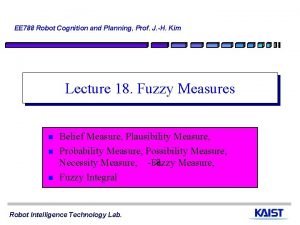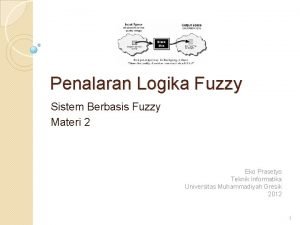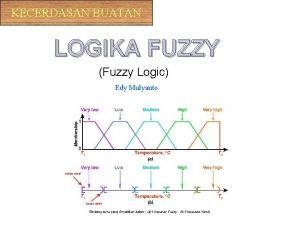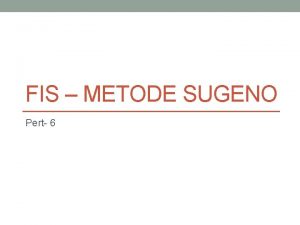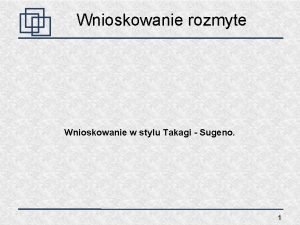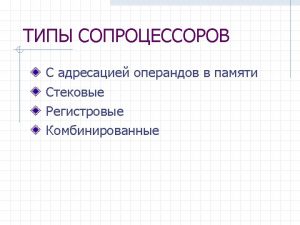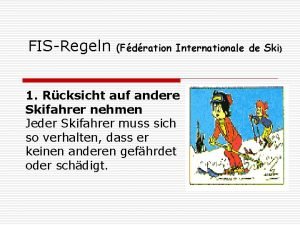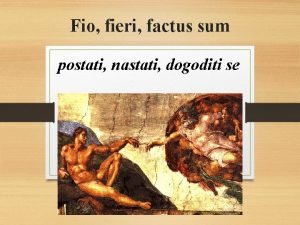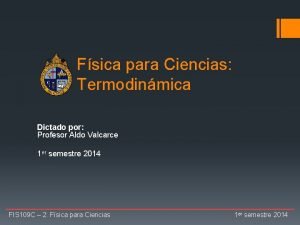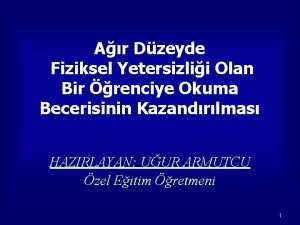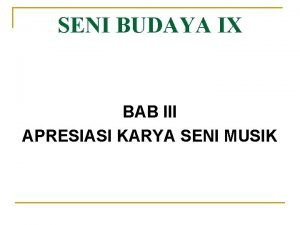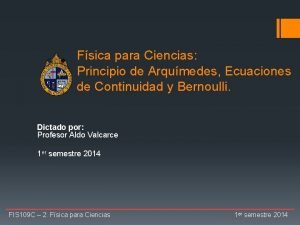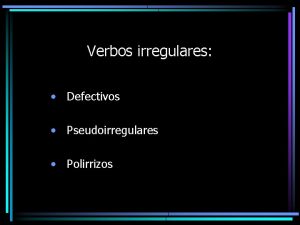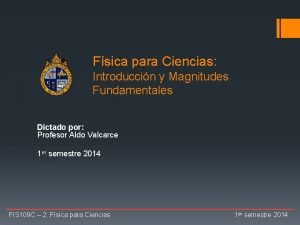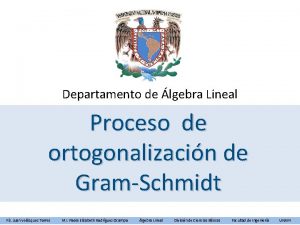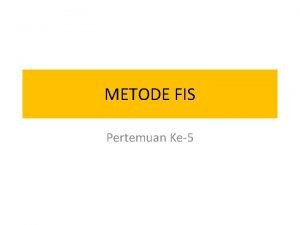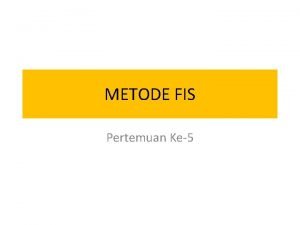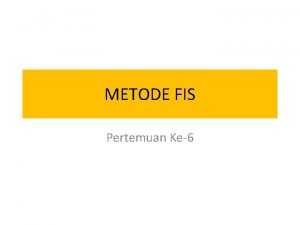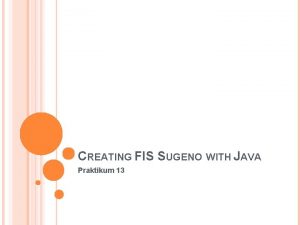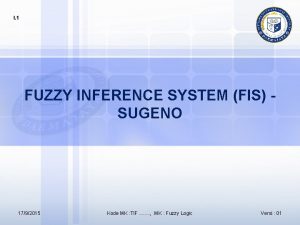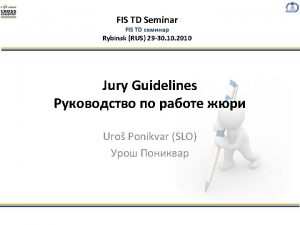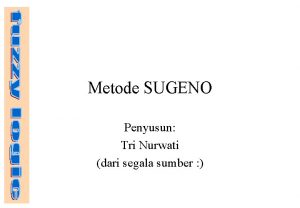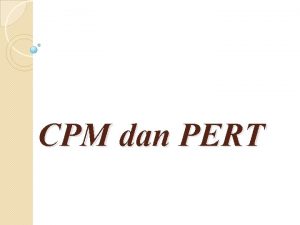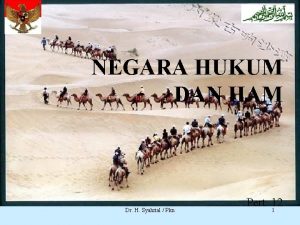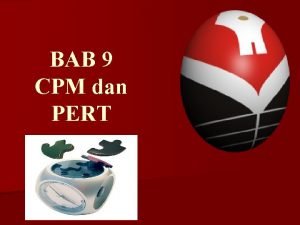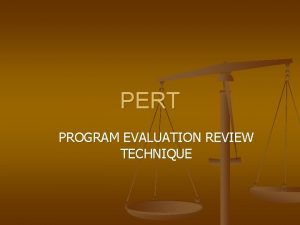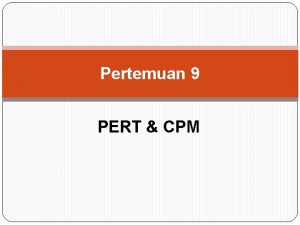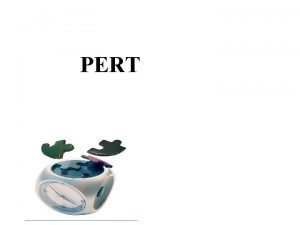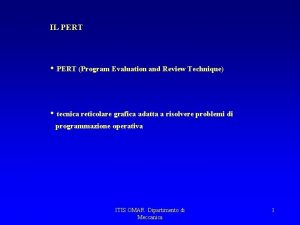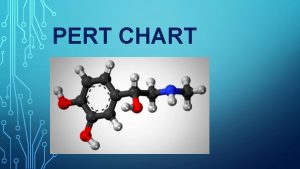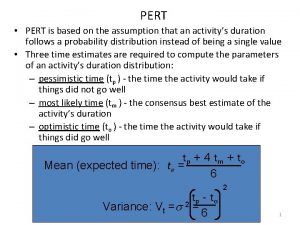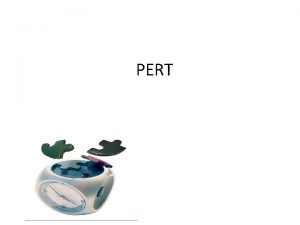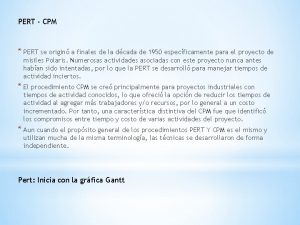FIS METODE SUGENO Pert 6 2 Metode Sugeno






















- Slides: 22

FIS – METODE SUGENO Pert- 6

2 Metode Sugeno • FIS yang dibahas sebelum ini adalah FIS tipe Mamdani • Tipe Mamdani merupakan tipe FIS standard yang umum dipakai • Kelemahan FIS tipe Mamdani adalah tidak praktis sebab harus menghitung luas daerah di bawah kurva • FIS alternatif adalah FIS dengan metode Sugeno, yang diperkenalkan oleh Takagi-Sugeno-Kang. • Penalaran Sugeno hampir sama dengan Mamdani

3 Michio Sugeno

• Format kaidah fuzzy Sugeno- IF 4 x is A AND y is B THEN z is f(x, y) yang dalam hal ini: • x, y dan z adalah peubah lingusitik; • A dan B adalah himpnan fuzzy ; • f (x, y) adalah fungsi matematik. • Bentuk yang paling umum diguankan adalah model fuzzy Sugeno orde-nol: IF x is A AND y is B THEN z is k yang dalam hal ini k adalah konstanta. • Defuzzyfikasi dilakukan dengan cara mencari nilai rata- ratanya. Sumber: Alexander Rakic, Fuzzy Logic: Introduction 3, Fuzzy Inference

5 • Pada metode Sugeno, fuzzifikasi, operasi fuzzy, dan implikasi sama seperti metode Mamdani. • Perbedaannya hanya pada agregasi dan defuzzifikasi. • Jika pada metode Mamdani agregasi berupa daerah di bawah kurva, maka pada metode Sugeno agregasi berupa singleton-singleton. • Pada kasus model Sugeno orde-nol, output setiap kaidah fuzzy adalah konstanta dan semua fungsi keanggotaan konsekuen dinyatakan dengan singleton spikes.

6 Mamdani Sugeno

7 • Defuzzyfikasi pada metode Sugeno lebih sederhana, karena hanya menghitung center of single-ton: • yang dalam hal ini, adalah nilai singleton.

8 • Contoh: (masih soal sebelumnya, penerapan center of singleton pada Mamdani) z 1 (Sumber: Sri Kusuma Dewi/Aplikasi Logika Fuzzy)

9 z 2

10 z 3

11 z 4

12 • Defuzzifikasi:

13 • Contoh: (Speed control) Seberapa cepat anda berkendara bergantung pada cuaca (temperatur dan keadaan langit) Temp = {Freezing, Cool, Warm, Hot} (Sumber: Andrew L. Nelson/ Introduction to Fuzzy Logic Control/University of South Florida)

14 Cover = {Sunny, Cloudly, Overcast}

15 Speed = {Slow, Fast}

16 Kaidah fuzzy: • If Cover is Sunny and temp is Warm then speed is Fast Sunny(Cover) Warm(Temp) Fast(Speed) • If cover is Cloudy and temp is Cool then speed is Slow Cloudy(Cover) Cool(Temp) Slow(Speed) • Pertanyaan: seberapa cepat berkendara jika temperatur 65 F° dan langit 25% berawan?

17 • Fuzzifikasi: 65 F° Cool = 0. 4, Warm= 0. 7 0. 4

18 25% berawan Sunny = 0. 8, Cloudy = 0. 2 0. 8 0. 2

19 • Operasi fuzzy dan implikasi: R 1: If Cover is Sunny and temp is Warm then speed is Fast min( 0. 8, 0. 7) = 0. 7 Fast = 0. 7 R 2: If cover is Cloudy and temp is Cool then speed is Slow min(0. 2, 0. 4) = 0. 2 Slow = 0. 2

20 • Agregasi dan Defuzzifikasi: 0. 7 0. 2 Persamaan garis Fast melalui (25, 0) dan (75, 1) (z) = 0. 02(z – 25) (z) = 0. 7 z = 0. 7/0. 02 + 25 = 60 Persamaan garis Slow melalui (25, 1) dan (75, 0) (z) = -0. 02(z – 75) (z) = 0. 2 z = 0. 2/(-0. 02) + 75 = 65

21 Jadi, kecepatan berkendaraan adalah 61 mph

22 Mamdani or Sugeno? • Mamdani method is widely accepted for capturing expert knowledge. It allows us to describe the expertise in more intuitive, more human-like manner. However, Mamdanitype fuzzy inference entails a substantial computational burden. • On the other hand, Sugeno method is computationally effective and works well with optimization and adaptive techniques, which makes it very attractive in control problems, particularly for dynamic nonlinear systems. Sumber: Alexander Rakic, Fuzzy Logic: Introduction 3, Fuzzy Inference
 Sugeno
Sugeno Sugeno
Sugeno Sugeno
Sugeno Sugeno
Sugeno Takagi-sugeno
Takagi-sugeno Fis xxx
Fis xxx Fis regeln
Fis regeln Glagol fio fieri factus sum
Glagol fio fieri factus sum Datasoft belgelerden fiş oluşturma
Datasoft belgelerden fiş oluşturma Tanda kromatis
Tanda kromatis Expansion termica
Expansion termica Lionspace fis
Lionspace fis Financial information system fis
Financial information system fis Fiş cümleleri resimli
Fiş cümleleri resimli Tangga nada 3 kres
Tangga nada 3 kres Ecuacion de flotabilidad
Ecuacion de flotabilidad Fis agh
Fis agh Fis miser
Fis miser Map-fis
Map-fis Verbo volo
Verbo volo I fis
I fis Fis
Fis Dra. paola elizabeth rodriguez ocampo
Dra. paola elizabeth rodriguez ocampo
